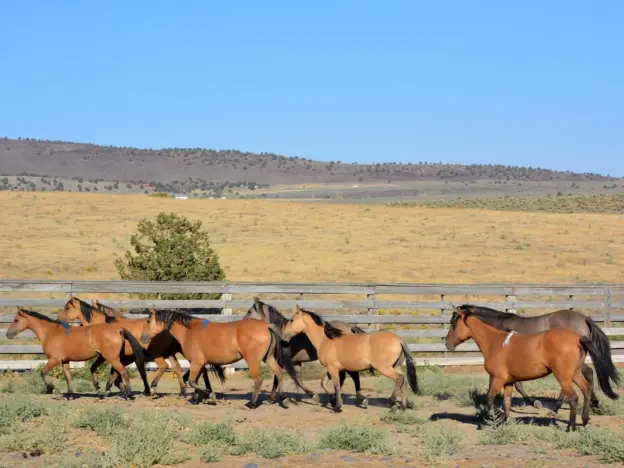Intro
The Kiger mustang doesn’t come from North America originally, but it’s history begins in the Pacific Northwest of the United States in a remote area of Oregon.
Origins
In the early 1970’s the Bureau of Land Management found a small herd of feral horses in a remote area in southeast Oregon. Upon capture the animals were all found to exhibit the primitive markings of the dun color modifier. The Kigers also display characteristics of Spanish animals and are thought to be the purest descendant of horses brought to North America by the Conquistadors.
Since their discovery, the BLM has managed their breeding and promoted the type, as they are thought to have incredibly pure bloodlines. They are unique in that they almost all carry the dun factor, regardless of their base color. This includes primitive markings, including rarer brindling off the dorsal stripe, leg barring and face mask. White markings are not desired.
Physically they are a baroque type, with rounded contours and an elegant stance. Their proportions are well balanced, providing the impression of refined strength.
Features
Average 14.2 hands, tend to be taller when raised in captivity
Usually display primitive markings
Surefooted
Physique
Head is medium sized and clean with a straight, slightly sub-concave or sub-convex
Ears are hooked at the tips and wide set
Neck is high and arched
Chest is narrow but deep
Shoulder is sloped
Back is short
Hindquarters are square
Strong legs built for distance
Hard, solid hooves of oblong shape
Traditional Colors:
Temperament
High energy and high endurance
Intelligent and willing
Fiery spirit
Highly attentive
Fearless and bold
Use
Take naturally to herding
Pleasure horse
Helpful Links
* All links open in a new window
Kiger Horse Association and Registry
Where to Buy
More Images




